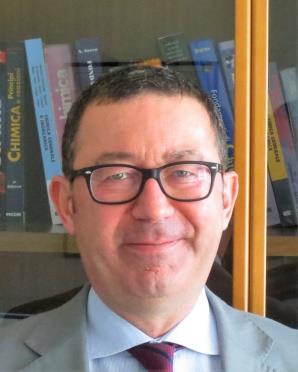Research Seminar of Prof.Marco Bettinellifrom University of Verona
Lecture Time: 14:00 on 25th November, 2016
Lecture Room: C502 of Science and Innovation Building
Lecture Title:Tb3+-Eu3+Energy Transfer in Oxide Materials

Marco Bettinelli
Luminescent Materials Laboratory, Department of Biotechnology, University of Verona and INSTM, UdR Verona, Strada Le Grazie 15, 37134 Verona, Italy; e-mailmarco.bettinelli@univr.it
Abstract
Despite numerous studies over the years, energy transfer processes are still interesting from both a fundamental and an applied point of view, as transfer processes in pairs of ions and from the host to luminescent ions are crucial for development of innovative phosphors, scintillators and materials for solar cells. Here I will present results on these processes, concentrating on the ion pairs Tb3+-Eu3+in eulytite phosphate hosts.
Eulytite double phosphates A3M(PO4)3(A=Ca, Sr, Ba; M=La-Lu, Y, Bi) are well known to be isotypic with the mineral eulytine (Bi4Si3O12). The emission spectrum of neat Sr3Tb(PO4)3upon excitation at 337 nm in the levels above5D3is dominated by5D4emission; no significant emission from5D3is observed due to efficient cross relaxation involving the Tb3+levels. On the other hand, the emission spectrum of the same host containing 10 mol% Eu3+upon excitation at the same wavelength (in the Tb3+levels) is dominated by strong emission bands from the5D0level of Eu3+. This indicates that Tb3+®Eu3+energy transfer is clearly present. The excitation spectrum of the Eu3+ 5D0emission is dominated by strong Tb3+bands extending in the UV region.
The presence of 10% Eu3+in Sr3Tb(PO4)3very effectively shortens the5D4decay time from 2.68 to 0.20 ms. The decay curve is not far from exponential, indicating that the energy transfer to Eu3+is accompanied by fast energy migration. The efficiency of the energy transfer from5D4amounts to 0.93, and the critical distance for the transfer from the5D4level of Tb3+is about 7 Ǻ.
The results obtained for the eulytite hosts will be compared with the ones recently obtained for double silicate hosts containing the same Tb3+and Eu3+ions.
Biography
Born in 1957, Marco Bettinelli received his doctoral degree in Chemistry cum laude from the University of Parma, Italy, in 1981. He has been post-doc at Birkbeck College, University of London (UK), Assistant Professor at the University of Padova (1983-1992) and Associate Professor at the University of Salerno (1992-1993). In 1993 he moved to the University of Verona, Italy, where presently is Professor of Inorganic Chemistry in the Department of Biotechnology. In 2008 he was awarded a doctorate honoris causa from Blaise Pascal University, Clermont-Ferrand, France. Marco Bettinelli has published more than 450 papers in the fields of Chemistry and Optical Spectroscopy of inorganic materials, and according to Scopus his hindex is currently 47. He has been a Visiting Professor in various universities (University de Caen, France; University Blaise Pascal, Clermont-Ferrand, France; Kyoto University, Japan; Boston College, USA and Chalmers University of Technology, Gothenburg, Sweden) and invited speaker or organizer in many international conferences. Since May 2013 Marco Bettinelli is Editor-in-Chief of the Journal of Luminescence (Elsevier). His scientific interests deal with numerous aspects of luminescent materials, and in particular with the synthesis, characterisation and spectroscopic properties (absorption and luminescence) of crystalline, nanocrystalline and amorphous systems containing rare earth or transition metal ions.
